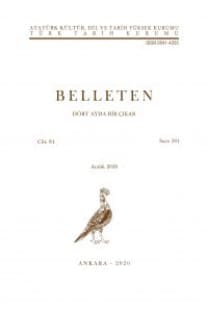Irak'taki Bektaşi Tekkeleri
The Bektshi Canverts in Iraq
The Bektashi convents in Iraq, which have so far received little attention from scholars, are significant for an appreciation of the extent of Bektashi influence beyond Anatolia and the Balkans. Moreover, a new body of documents, which have been passed down from generation to generation within Alevi dede families as a type of sacred trust, has come to light in recent years. These documents reveal that the dedes, during their periodic trips to Iraq, also regularly visited some of these convents. This new body of documents, referred to here simply as "Ale vi documents," along with some archival records, and various other primary and secondary sources, constitute the source base of the study at hand. Our sources point to the presence of Bektas-his in Iraq from the early seventeenth century onwards. But some of the convents in question were apparently founded long before this date, and were earlier affiliated with other dervish groups. Of these, especially the convent located in the shrine complex of Imam Husayn in Karbala, which, according to its endowment deed dated Sefer 962/ 1554-55, was^earlier inhabited by the Abdals of Rum, seems to have been an important>center for the Alevi dedes between the mid sixteenth to the late nineteenth centuries. This is shown by the fact that, among the Alevi documents from this period, a large number were either granted at this convent, or bear the seals of dervishes affiliated with this and other Bektashi convents in the region. This paper evaluates relations between the Alevi dedes and the Bektashi convents in Iraq within the context of Ottoman-Safavid conflict, which embroiled the region from the early sixteenth century onwards, and hypothesizes that some of the Bektashi convents in Iraq were the domain of pro-Safavid dervishes who may have acted as clandestine liaisons between the Safavid shahs and their followers in Anatolia.
___
- ISSN: 0041-4255
- Yayın Aralığı: Yılda 3 Sayı
- Başlangıç: 1937
- Yayıncı: Türk Tarih Kurumu
Sayıdaki Diğer Makaleler
XIX. Yüzyılda Nesturiler ve İngiliz Misyonerlik Faaliyetleri
Şehzade Eğitimini Çağdaşlaştırma Teşebbüsleri
Birinci Dünya Savaşı'nın Unutulmuş Bir Diplomatik Cephesi: Etyopya
Orta Avrupa'nın Kaderini Değiştiren Savaş: Mohaç Öncesi, Sonrası ve Kastilya'da Yankısı
II. Abdülhamit Döneminde Yabancı ve Azınlık Mekteplerinin Faaliyetleri
The Other Geography: Representations of the Turkish Landscape in English Travel Writings
